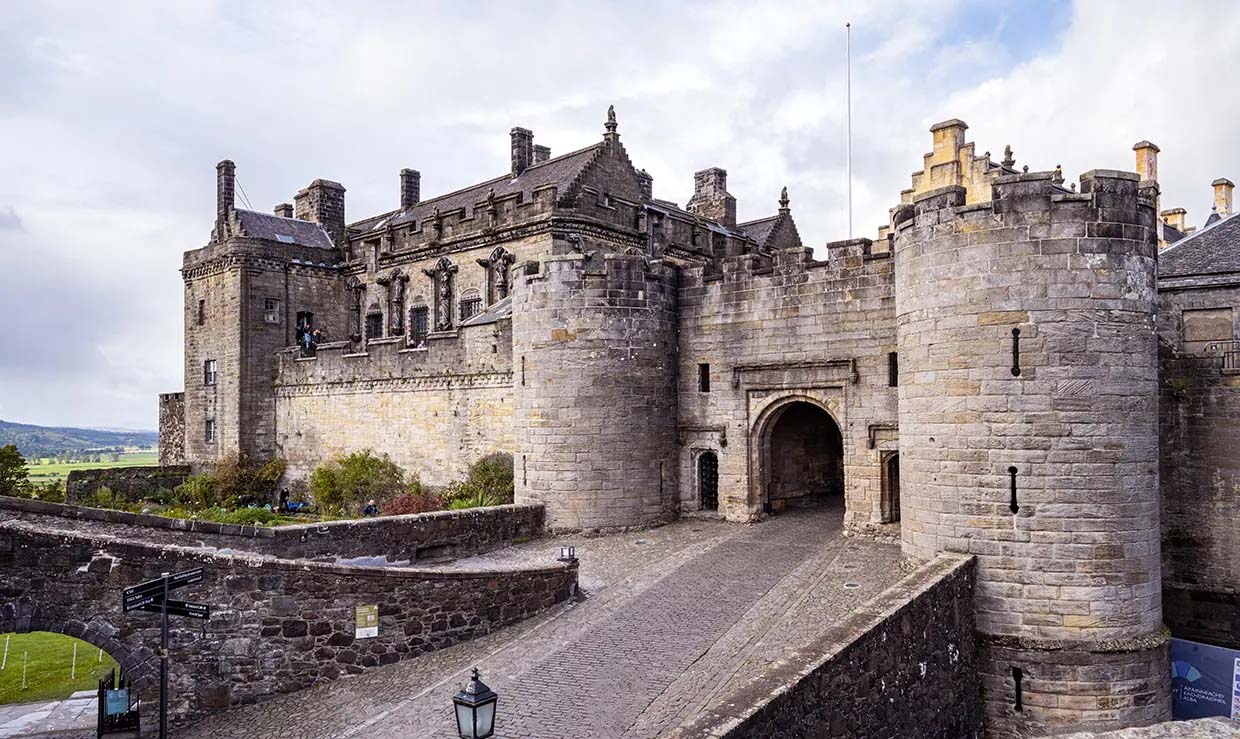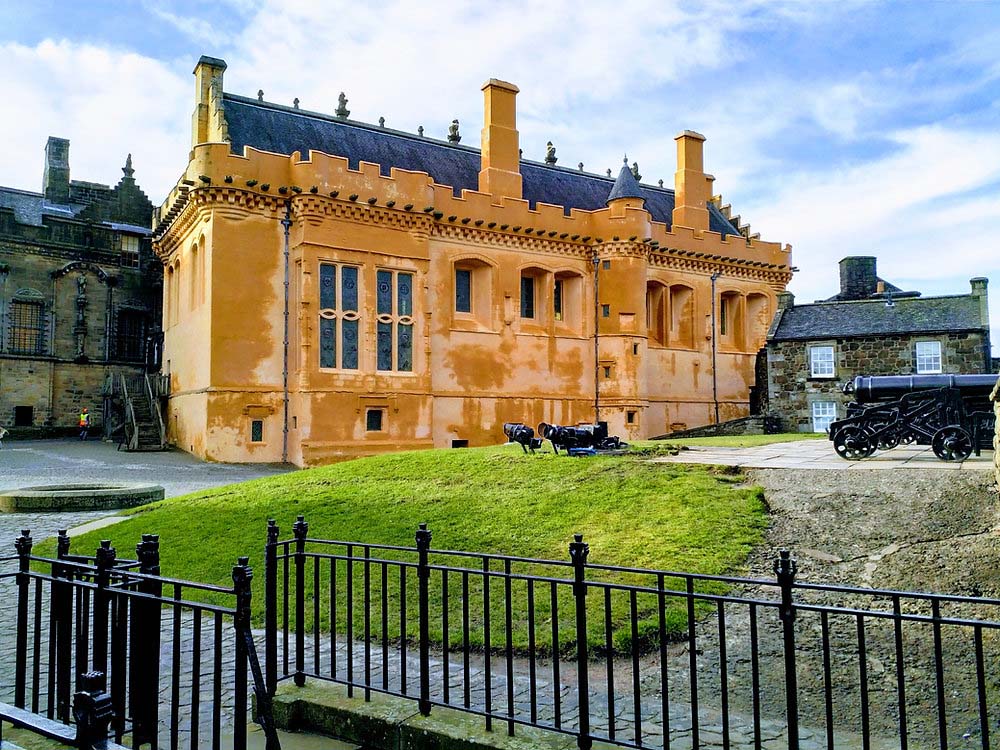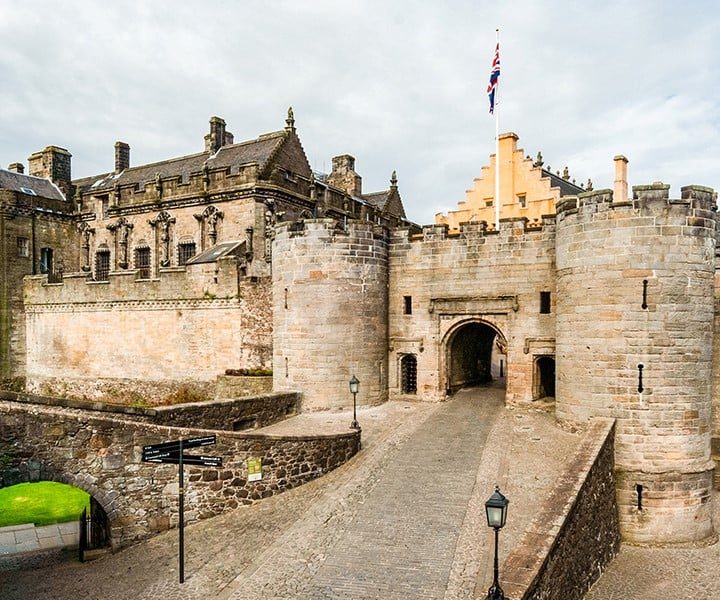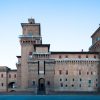Stirling Castle
Stirling Castle, an architectural marvel, stands as one of Scotland’s grandest and most historically significant castles. Furthermore, renowned for its strategic importance and rich history, Stirling Castle attracts countless visitors each year who are eager to explore its storied past and marvel at its magnificent structure. Perched atop Castle Hill, the castle offers breathtaking views and a deep dive into Scotland’s vibrant history.
Can’t wait to visit the castle? Book your Stirling Castle tour online.
Location of Stirling Castle
Stirling Castle is located in the city of Stirling, central Scotland. Its strategic position on a volcanic crag near the River Forth was crucial. It controlled the main route between the Highlands and Lowlands. Consequently, this made it a significant military stronghold throughout history. The castle’s elevated position provides commanding views over the surrounding landscape. These views include the historically significant Stirling Bridge and the site of the Battle of Bannockburn.

History of Stirling Castle
Stirling Castle boasts a rich history that dates back to ancient times. The earliest record of a castle on this site dates to the 12th century, during the reign of King Alexander I, who is believed to have built a chapel here. Over the centuries, the castle underwent numerous expansions and renovations, reflecting the changing needs and tastes of its royal occupants.
During the Wars of Scottish Independence, Stirling Castle played a pivotal role. It changed hands multiple times between the Scots and the English. The castle was the focal point of significant battles, including the Battle of Stirling Bridge in 1297, where William Wallace led the Scots to victory, and the Battle of Bannockburn in 1314, where Robert the Bruce achieved a decisive win against the English forces.
In the 16th century, Stirling Castle reached its architectural zenith during the reign of James IV, James V, and James VI. The Great Hall, completed in 1503 by James IV, served as the largest banqueting hall ever built in Scotland. James V added the exquisite Renaissance-style Palace, completed in the 1540s, which showcased the influence of French architecture and design.
The castle’s decline began in the 17th century, following the Union of the Crowns in 1603 and the subsequent relocation of the royal court to London. It saw military use during the Jacobite risings in the 18th century but gradually fell into disrepair. In the 19th and 20th centuries, restoration efforts were undertaken to preserve its historical significance and architectural splendor.

Current status
Today, the castle stands as a testament to Scotland’s rich cultural heritage. Moreover, Historic Environment Scotland manages the castle and has meticulously restored it to reflect its historical importance. Visitors can explore the various sections of the castle, including the Great Hall, the Royal Palace, the Chapel Royal, and the Stirling Heads Gallery.
The Great Hall, with its vibrant restored interiors, transports visitors back to the grandeur of the 16th century. Similarly, the Royal Palace offers a glimpse into the opulent lives of the Stewart kings and queens, featuring intricately decorated rooms and period furnishings. The Chapel Royal, rebuilt by James VI in 1594, now hosts a series of informative displays and exhibits.
Stirling Castle also serves as a venue for cultural events and educational programs, further enriching the visitor experience. The castle grounds and gardens provide a picturesque setting for leisurely walks, while the panoramic views from the castle walls offer a stunning perspective of the surrounding landscape.
In conclusion, Stirling Castle remains a vital link to Scotland’s past, embodying the country’s turbulent history and royal legacy. Its impressive architecture and strategic location make Stirling Castle a must-visit destination for Scottish history enthusiasts. The castle’s historical treasures are meticulously preserved and showcased. It continues to captivate and educate visitors worldwide. This ensures that its legacy endures for future generations.
Admission
Community features
Castle features
Video
Location
Official website
Featured listings














